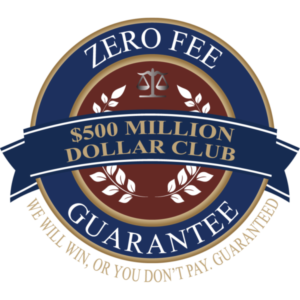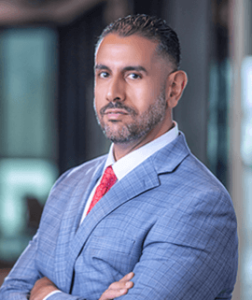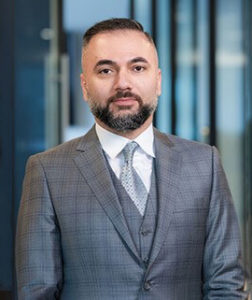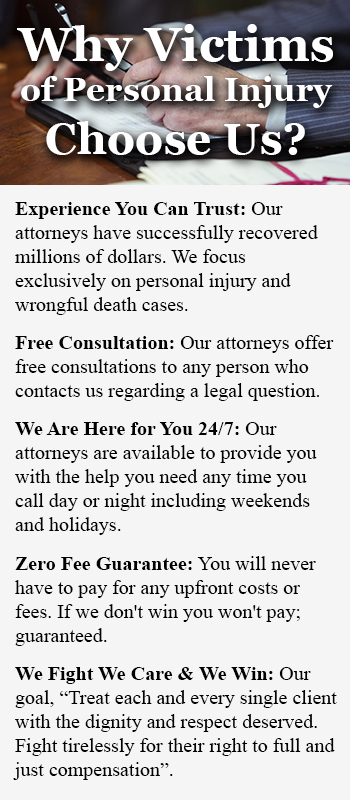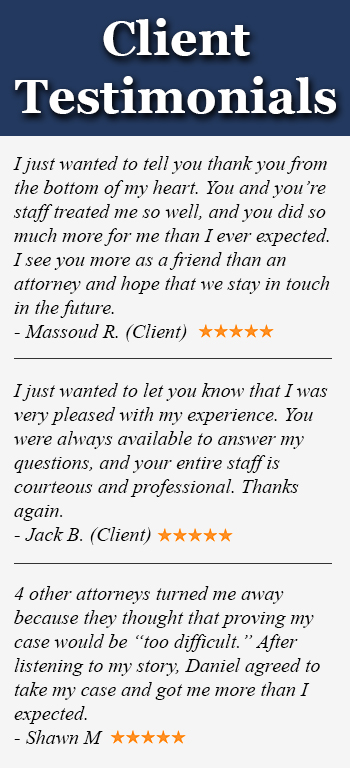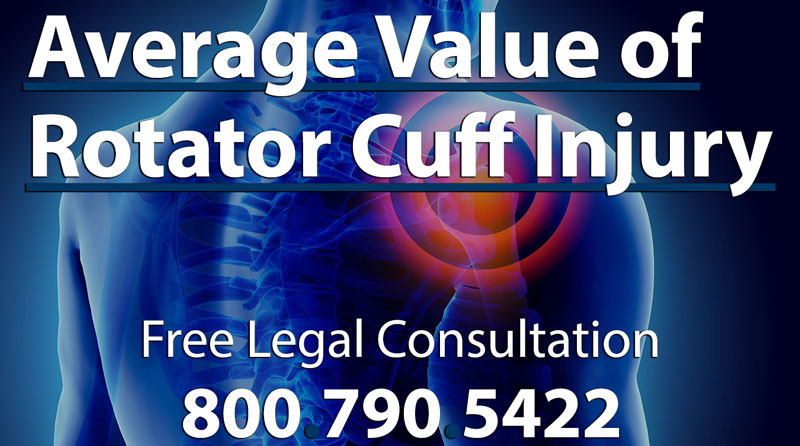
Slip and fall injuries can happen anywhere at any time, and they can leave the victim with severe injuries that can be incredibly difficult to recover from fully. One of these injuries that can be inflicted from a slip and fall accident is a torn or damaged rotator cuff. These shoulder injuries can range from mild inflammation to severe tearing that can require surgery to recover from fully. If one of these injuries is caused by a slip and fall accident that occurs as a result of negligence or misconduct of another you may be able to file a lawsuit against the responsible party for sizeable monetary compensation. However, when pursuing legal action against another party, it is in your best interest to hire skilled legal assistance as having a good lawyer on your side can mean the difference between filing a successful claim for compensation and having your case dismissed from court entirely. At Normandie Law Firm, our top-rated Los Angeles attorneys with experience in slip and fall cases can guide you through the process of building your case, filing your claim, and collecting compensation for the damages that you have endured. If you have any questions after reading this article, please feel free to reach out to our top law offices for a free consultation by one of our skilled attorneys who have experience handling rotator cuff injury claims.

Slip and Fall Accidents
Slip and fall accidents can cause injuries that range from minor bumps and bruises, to actually severe damages like spinal cord and brain injuries. Slip and fall accidents most often occur at restaurants. However, they can truly happen anywhere. If a slip and fall accident injuries someone at a hospital, place of business, government property, or place of residence, those parties can be held responsible for compensating you for the damages. Some common causes of slip and fall accidents include:
- Cluttered Floors
- Loose Floorboards
- Defective Sidewalks
- Parking lot potholes
- Poorly constructed staircases
- Torn carpeting
- Recently mopped or waxed floors
- Weather Conditions
- Improper Training
- Nursing Home Neglect
- Footwear
These are just some of the causes of a slip and fall accident. However, it is up to the property or business owner to regularly inspect their space to ensure that it is safe for patrons. These owners, are also expected to warn possible visitors of any hazardous conditions within a reasonable amount of time. If they fail to do so, they could be hit with a truly damaging lawsuit as they are expected to compensate the victim for the damages. An expert attorney who has experience in slip and fall cases can give you more information.
Rotator Cuff Injuries
The rotator cuff is considered to be a vital part of the everyday function of a person’s shoulder. Formed by a combination of muscles and tendons, the rotator cuff helps your shoulder move and stay fully able. Any problems or damages to a rotator cuff can be quite common and can arise as a result of tendinitis, bursitis, or tear injuries. Rotator cuff tendons can become quite inflamed from frequent use, age, or injury. Any repetitive overhead motion can cause a rotator cuff, but they can also be caused by direct and forceful impact; such as a slip and fall accident. As people grow older, these tendons tend to wear down, allowing for tears and other damages to more easily occur. Some of these tears are not immediately painful, and others are, it actually depends on the age and health of the victim, as well as how severe the injury is. Treatment of rotator cuff injuries can include the following:
- Rest
- Heat or cold to the sore area
- Medicines that reduce pain and swelling
- Electrical stimulation of muscles and nerves
- Ultrasound
- Cortisone injection
- Surgery
If an individual suffers a rotator cuff injury due to slip (trip) and fall accident, he may be able to file a lawsuit and collect compensation for his damages. Consult with a qualified attorney with expertise in rotator cuff injury lawsuits for help moving forward.
A Torn Rotator Cuff Injury Is More Than Just One Injury
A torn rotator cuff injury is a painful injury, that is commonly long lasting and difficult to repair. People who have been in an accident where the rotator cuff is injured often suffer more than just one injury. That being said, there are many factors which will come into play, to determine if this injury will be corrected by surgery, or exercise therapy, or whether it can even be “fixed” at all.
The most common types of shoulder injuries are as follows:
1. Shoulder sprain – A shoulder sprain is actually a separated shoulder, and the ligaments supporting the shoulder are torn or separated at the AC joint with this injury. There are different grades related to this injury.
Grade 1 Sprain – The ligaments of the AC joint are stretched or partially torn, but the bone is intact, with mild swelling and pain associated with the injury.
Grade 2 Sprain – Here the ligaments have actually torn apart, with pain and swelling of the region.
Grade 3 Sprain – The AC joint is separated completely, affecting adjoining ligaments connected to the shoulder blade, dislocating the collarbone. There will be bruising, pain and no movement of that area without substantial discomfort and pain.
Grades 4, 5 and 5 Sprains – These sprains are severe, rare and the AC joint is separated with the muscles actually detaching completely form the collarbone.
2. Shoulder tear – Shoulder tears can affect the muscles, tendons and other areas of the labrum to restrict motion of that region. Tears can be large or small. This tear can result in a dislocated shoulder, with a low range of motion, instability of the region and high levels of pain associated with the injury.
3. Rotator cuff tear – This is one of the most common injuries after a trauma or car accident. Tears of the rotator cuff are often difficult to find, even on an MRI with a specialist or doctor reviewing the injury. This is because the tears are often small, and not a full-thickness tear, but are still extremely painful to endure. Tears are very painful to endure, and do not heal or “go away” on their own. There is always the need for a surgical intervention. Large rotator cuff tears can begin to influence the strength and mobility ability of the entire arm, and could result in the development of osteoarthritis in later years following the accident. The surgery suggested to repair torn rotator cuffs is often arthroscopic, but it is equally as complicated. An arthroscopic surgery is minimally invasive, but the surgery can be highly risky, depending on the tear.
What Exactly Happens with a Torn Rotator Cuff Surgery?”
All torn rotator cuff surgeries are planned in advance to the finest detail by the surgeon. Each surgery is unique, and has its own associated risks. Generally speaking, a torn rotator cuff surgery starts with removing the bursa, then taking out the bone to release the ligament. The torn tendon is maneuvered to be reinserted in what should be the normal attachment into the humerus. This requires using sutures and bone anchors. Other procedures can be used too for a shorter recovery time, it will depend on the recommendation of the surgeon which surgery is best for this procedure based on the tear.
4. Biceps tendon tear – This injury affects the tendon attached to the biceps, where the muscle meets the bone. It allows the biceps muscle to let the arm bend and rotate from the elbow. The ligaments attached to the shoulder in this area stabilize the joint, and an injury in this region will be extremely painful.
5. Labral tear – The labral tear is a tear in the fibrous tissue lining the shoulder socket. This is the area where the joint requires stabilization, but tears here hurt the top area of the socket where the biceps tendon is connected to the shoulder. This area is called the SLAP or superior labrum anterior and posterior tear. If it tears at the bottom half socket on the front of the shoulder, it is referenced as a Bankart tear. A tear at the back of the shoulder is referred to as a reverse Bankart tear. Labral tears are evidenced by a pop or click sound when moving the arm. It will get stuck in joint when trying to rotate the arm as well, and it can be extremely painful to experience.
A Torn Rotator Cuff Surgery Has High Stakes and Risks
As mentioned, a torn rotator cuff surgery has high risks associated with it. This surgery is not like setting a broken bone back into place, and then putting on a cast on the bone to keep it steady. The risks of a torn rotator cuff surgery include high stakes, such as the risk of complications, such as:
- Issues related to the surgery or anesthesia
- Developing a pulmonary embolism
- Surgical site infection
- Hospital acquired infection
- Developing a “frozen shoulder”
- Injury to the peripheral nerve
- Chronic ongoing pain, even after the surgery
- A failed rotator cuff repair
- Death from a blood clot traveling to the brain or heart
There are other treatments for a torn rotator cuff that do not include a surgical procedure. These treatments include:
- Muscle strengthening exercises
- Scapular stabilization
- Stretching exercises
- Flexibility exercises
- Acupuncture
- Topical treatments
- Non-steroid anti-inflammatory drugs (NSAIDs)
- Other treatments for ongoing pain
My Shoulder Is Still Killing Me, What Are My Surgical and Non-Surgical Options?”
1. Total shoulder replacement.
A total shoulder replacement is a common surgery, to improve the functional outcomes of this type of injury. There are several factors which will come into play to allow for a successful surgery. Namely that the prosthesis is place accurately, and there is careful consideration to the surgical procedure related to the soft tissue envelope surrounding the elements related to the rotator cuff, capsular and neurovascular regions. This surgical procedure is a total shoulder arthroplasty or TSA, and the biomaterials used are commonly pyrocarbon, ceramics and often a hybrid of bony ingrowth and cement with metals, to afford a “fix” in this region.
2. Arthroscopy for frozen shoulder.
The procedure of an arthroscopy for a frozen shoulder is performed to help improve the limited activity and passive shoulder movement of this injury. This injury is susceptible to inflammatory issues and fibrosis, where chronic inflammatory cells can accumulate in the disease capsule. The frozen shoulder can be retriggered even after a surgical procedure has been accomplished to fix it. For this reason, this injury is prone to chronic inflammation, and a long healing time.
3. Acromioclavicular joint repair for arthritis.
The acromioclavicular joint repair for arthritis is an often mis-diagnosed condition. It occurs frequently with shoulder rotator cuff tears, and can result in pain in the joint, joint instability and high levels of pain for the person suffering with this condition. An accurate diagnosis is critical for this condition, as other complications can follow. There is a risk of needing to reoperate on people who have torn rotator cuff injuries. The reason the diagnosis is sometimes missed, is because people with arthritis and degenerative diseases in old age, may have developed issues related to arthritis of the same joint regions. A non-operative solution can be offered in many cases who have degenerative acromioclavicular joint disease. This might prevent the joint issues from getting worse over time, or the risk of needing to manage a distal clavicle resection surgical procedure for this issue.
4. Arthroscopy for impingement syndrome.
The treatment of an arthroscopy for a shoulder impingement syndrome (SIS) may not completely prevent the pain of the injury from returning. Exercise, therapies, acupuncture, and surgical procedures are recommended for this issue. But it is NOT recommended to use nonsteroidal anti-inflammatory drugs (such as over the counter pain relief), for this condition. The surgical procedure recommended will depend on each individual case, but a standard surgical technique of a routine arthroscopic subacromial decompression (ASD), is often performed, with an arthroscopic bursectomy. Interestingly, some studies suggest that clinically many exercise therapies can be effective to alleviate pain in this area.
You & Your Case
Clients who enter our law firm looking for compensation for their shoulder injury often ask a wide variety of questions regarding the value of their case. In most cases, clients asking about average case, and average settlement values, already have an attorney but are not satisfied with the way they have been treated. Our experienced lawyers at Normandie Law Firm, however, are committed to extending the most assistance we can offer, regardless of whether or not you already have an attorney or not. Some of these questions regarding the average value of a rotator cuff injury from a slip and fall accident are listed as follows:
- How much is a rotator cuff injury case worth?
- What is the value of a rotator cuff injury lawsuit after a slip and fall accident?
- What is the average settlement for a torn rotator cuff injury?
To determine the average value of a rotator cuff injury from a slip and fall accident you must first understand that generalizing any average can be somewhat challenging. The best way to figure out the value of your case and possible settlement is to seek out competent legal representation as they can better assist you in identifying the key aspects of your case. However, that is not to say that calculating the average settlement amount for a separate shoulder injury is impossible. Rough estimates can still be reached through calculating the compensable damages related to your case. These compensable damages are usually separated into three categories: economic damages, noneconomic damages, and punitive damages.
Economic damages typically make up a significant portion of a case’s total value as these damages carry a definable monetary value, unlike the other two damage categories. Some of these economic damages include:
- Past & Future Medical Expenses: These are the costs that a victim must endure for the hospitalization of the initial injury and any further treatment needed in the future because of this injury. These expenses often make up a significant portion of a settlement value.
- Loss of Income: These compensatory damages meant to reimburse the victim for any wages lost from the injuries. This amount can be determined through a thorough examination of the victim’s salary history and often includes sick and vacation time.
- Loss of Potential Income: Sometimes injuries can be so severe that the victim may lose the ability to perform at the same level they had before their injuries. To determine this amount, a complicated formula is used that involves the examination of the victim’s projected earnings and the impact that the damages may have had on the victim’s ability to find and perform future work.
Noneconomic damages are a little harder to calculate as they don’t carry any particular monetary value. While the best way to determine the level of noneconomic damages in your case is to seek legal guidance, it still helps to understand the different compensable damages that make up noneconomic damages. These noneconomic damages are listed as follows:
- Pain and suffering: This damage is compensated to a victim based on the pain and suffering they endured from their injuries. This amount is often calculated by the use of a pain multiplier that has the victim identify their level of pain on a scale of one to ten.
- Emotional Distress: This form of compensation is offered to victims that have experienced any emotional trauma suffered due to the injuries. The compensable amount of emotional distress often varies from state to state.
- Loss of Consortium: Loss of consortium is often added to the value of your case when the injuries are so severe that the victim’s loved ones are deprived of a normal loving relationship and companionship
The final form of damages is punitive damages. Punitive damages are typically added to the total value of a case as to punish the defendant for their actions and to deter them from engaging in similar conduct in the future. Punitive damages are considered to be relatively difficult to fight for, as they involve proof of the defendant acting deliberately. In these cases, a lesser attorney will settle the suit without fighting for punitive damages. However, our attorneys at Normandie Law Firm are committed to ensuring that our clients receive all the damages they demand; punitive damages included.
A rotator cuff injury lawsuit can be worth over $100,000 if the damages prevented you from working for a period of time or if you needed numerou medical ttreatments to be healed. Your lawsuit may be worth over $250,000 if someone else diretly caused it; for example, a boss who sent you into a dangerous situation or a business that negligently hired a driver with a reord of reckless driving. In many cases, rotator cuff injuries are not serious enough that you need to receive surgery; these lawsuits are worth less than $40,000 because of the relative lack of damages.
To give you an idea of what kind of compensation amount you could receive from your separated shoulder or rotator cuff injury, we’ve compiled a list of example settlements and verdicts. These examples are as follows:
- A plaintiff receives $757,000 settlement for shoulder injury caused by car accident that resulted in loss of earning capacity
- A plaintiff received $300,000 settlement after suffering shoulder injury after a car accident. Injury involved torn tendons and rotator cuff, arthroscopic surgery and six months of physical therapy.
- A plaintiff receives $190,000 verdict for suffering a torn rotator cuff. The injury was to her non-dominant shoulder and required surgery
- A plaintiff who slipped and fell in a store receives $65,000 after she fractures various bones at the shoulder joint. Required 60 physical therapy sessions and would continue to experience pain throughout her life.
- A plaintiff’s rotator cuff was torn when a pulley slipped at her workplace. Her surgery was relatively successful, but she was likely to have continued orthopedic issues. The case settled for $280,000.
As always, there is no guarantee that your lawsuit will have a positive outcome. That is why it is incredibly important that you seek representation from an accomplished lawyer experienced in rotator cuff injury cases before pursuing legal action.
How Normandie Law Firm Can Help
Having an experienced attorney on your side can make the difference between filing a successful claim for compensation and having your case dismissed from court entirely. Clients who file a claim with our law firm an expect to find some if not all of the following damages compensable to them:
- Past and Future Medical Expenses
- Loss of Wages
- Potential Loss of Future Wages
- Pain and Suffering
- Emotional Distress (anxiety, depression, PTSD, etc…)
- Punitive Damages
At Normandie Law Firm we can guide you through the often arduous process of fighting for proper compensation for your damages. While our attorneys are based out of Los Angeles, we also practice in San Jose, Oakland, San Francisco, Sacramento, Fresno, San Diego, Orange County, Stockton, Bakersfield, and throughout the entire state of California.
Free Second Opinions
 Some attorneys are lazy, and will sign you up to their firm but will disappear once your name is on the paper as they are busy signing up more cases. In these instances, their business is based more on volume and will attempt to sign up as many cases as possible. In turn, they will spend less time on cases resulting in severely reduced settlements. Our firm will not treat you like a number. We will be in communication with you throughout our lawsuit and will treat you like family. So if you already have an attorney don’t worry, we’ll give you a second review of your case 100% free of charge.
Some attorneys are lazy, and will sign you up to their firm but will disappear once your name is on the paper as they are busy signing up more cases. In these instances, their business is based more on volume and will attempt to sign up as many cases as possible. In turn, they will spend less time on cases resulting in severely reduced settlements. Our firm will not treat you like a number. We will be in communication with you throughout our lawsuit and will treat you like family. So if you already have an attorney don’t worry, we’ll give you a second review of your case 100% free of charge.
FREE CONSULTATION AVAILABLE TO YOU: If you contact our law offices today, we can walk you through the complicated process of filing your claim completely free of charge. As a show of this commitment to you and your case we offer our clients the benefits of a zero fee guarantee policy. Under our zero fee policy, all clients don’t pay for our services until their case is won. If you feel in need of a second opinion, second opinion case reviews are also free under this policy. Please, feel free to give us a call, and we can guide you down the path of receiving proper compensation for your damages.
More Information Regarding Shoulder Injuries
Shoulder Injury Complex Regional Pain Syndrome (CRPS) Lawsuit

